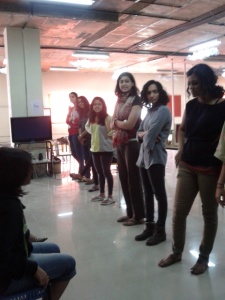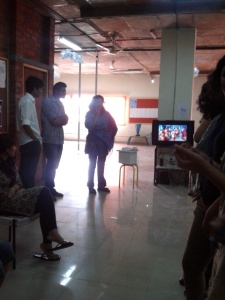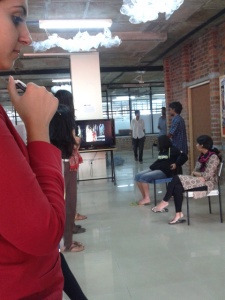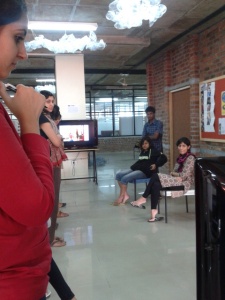Directed again by P. Vasu, the Tamil version of Manichithrathazhu came out in 2005 as Chandramukhi. The star-studded cast included Tollywood’s idol Rajinikanth along with Prabhu Ganeshan and Jyothika. The movie went on to overflow the box-office and brought back a collection of 64 crores. This remake also went on to win numerous awards, including the Filmfare Awards for Best Female Playback Singer and Best Comedian(Tamil), and the state award for Best Actor and Best Actress.
The movie brought Rajinikanth back to fame, after the box-office failure of Baba, and is called his “come-back” film. The songs in the movie became such a hit that an album was created and released based on the songs. The story is almost exactly like Vasu’s Kannada remake of Manichithrathazhu – Apthamithra. However, there are a few slight variations. For example, there is another interesting character within the household – Akhilandeswari – who is Senthil(the young husband)’s aunt. She is a bachelorette who was promised in marriage to Senthil’s father, but was denied this right. Thus the two families are initially not on speaking terms, and this, along with Akhilandeswari’s character (played by yester-year actress Sheela), adds to the drama. This intimidating aunt who runs the household and is feared by all, feels she is not given due respect by Saravanan (Rajnikanth) and attempts to have him killed by her mute helper. However, by the end of the movie, on hearing of Saravanan’s intended life sacrifice for his friend, she bows down before him and asks for his forgiveness. Rajnikanth is also given a closer relationship to the young husband, as his foster brother, adopted by Senthil’s parents. Dr. Saravanan is given supernatural powers in this version however, as he appears to read the minds of everyone in the household. He also acts very freely with the women of the household, who are all impressed by the doctor from America – making their husbands restless with sleepless nights.
Like the Kannada version, Chandramukhi also introduces Rajnikanth in the beginning of the movie, having him leave and come back again. The doctor is sent by his foster mother before Senthil to investigate the dangerous rumours surrounding the palace to which the young couple have decided to move. However, unlike both the Malayalam and Kannada versions, the family members do not know the story behind the house, and are instead told the story by a priest in the temple. The scene of the harmonica is again repeated in the Tamil version as well. Like Apthamitra, Chandramukhi also decides to follow the more supernatural aspect of the events, rather than logically explain each suspicious occurrence. For example, glimpses of a gigantic snake is seen throughout the movie, and is shown as slithering out of the house after the climax of the movie.
Unlike its predecessors, this movie has a tragic end to Ganga’s childhood. Her parents are killed by the village elders because her father married a woman of the lower caste. Hence, Ganga is raised by her grandmother, on stories of mythology and fantasy. The flashback however, is a lot like the Malayalam movie. The climax scene is like Apthamitra, except that the story shows the entire story of the King and the court dancer Chandramukhi, with scenes of the king chopping off her lover’s head and watching the body dance for a few minutes before falling to the ground. When Ganga looks up, however, and finds him still standing there, she continues dancing. This scene is done in the Hindi and Kannada versions as well, although it was not included in the original. The dancer, Chandramukhi, is a Telugu from Andhra Pradesh, like in the Kannada movie. In the Malayalam movie however, she is a Tamilian named Nagavalli.
A sequel to Chandramukhi was supposed to have been made with Rajnikanth again, but instead Vasu made a Telugu sequel, named Nagavalli(2010), with Venkatesh Daggubati as Dr. Vijay, Rajnikanth’s apprentice, who can also read minds. Again, in this movie, the dancer is Nagavalli from Tamil Nadu. However, the story is entirely different, as it talks about the strange incidents happening in the house of a middle-aged couple with five daughters. The climax ends with the evil king still being alive and a fight between him and the possessed daughter, who is helped in the end by Dr. Vijay. The snake again makes numerous appearances in this movie, and the painting of Nagavalli is what brings on these strange and supernatural events.
Chandramukhi also has an air of mystery around it, as it is rumoured that Rajnikanth had a very serious heart attack soon after the making of this movie.



